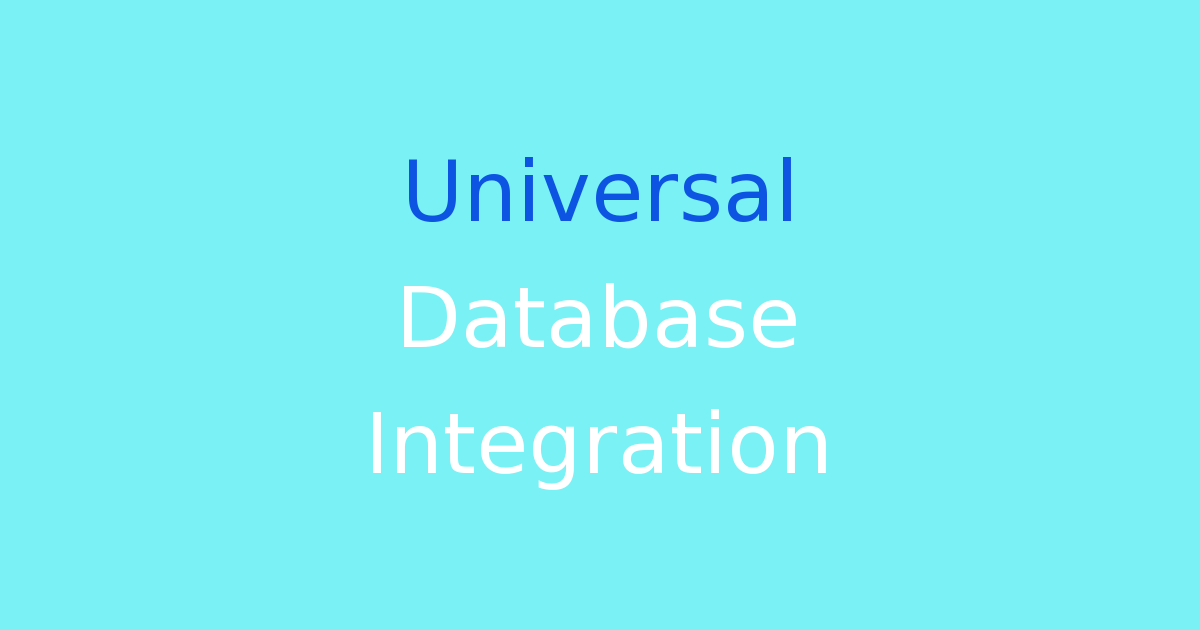Integration of databases on a universal scale.
Universal Database Integration: Enhancing Connectivity in the Digital Age
Introduction
In today’s digital age, data plays a crucial role in decision-making processes across various industries. With the increasing amount of data being generated and stored by organizations, the need for seamless integration of databases has become essential to ensure smooth operations and efficient data management. Universal database integration aims to address this need by providing a unified platform for connecting and accessing data from different databases, regardless of the technology or format they are stored in.
Problem Statement
Traditional database systems are often limited in their ability to communicate and share data with each other. This can lead to data silos, where information is stored in isolated databases that are not easily accessible or interoperable. As a result, organizations may struggle to retrieve and analyze data efficiently, leading to delays in decision-making and hindered business operations.
Existing System
The current approach to database integration typically involves using middleware or custom scripts to transfer data between different databases. While these methods can work to some extent, they often come with their own set of challenges and limitations. For example, middleware solutions can be expensive to implement and maintain, while custom scripts may lack scalability and robustness.
Disadvantages
1. Limited scalability: Traditional database integration methods may struggle to handle large volumes of data or concurrent user requests.
2. Lack of flexibility: The rigid structure of existing integration solutions may hinder the ability to adapt to changing business needs or new technologies.
3. Security concerns: Transferring data between databases using middleware or custom scripts can pose security risks, such as data breaches or unauthorized access.
4. Complexity: Managing and troubleshooting complex integration setups can be time-consuming and resource-intensive, leading to increased costs and decreased efficiency.
Proposed System
The proposed universal database integration system aims to overcome the limitations of traditional approaches by providing a centralized platform for connecting and interacting with multiple databases. This system will leverage advanced data integration techniques and technologies to ensure seamless communication and data exchange between different database systems.
Advantages
1. Increased efficiency: The universal database integration system will streamline data management processes and facilitate faster access to critical information, enabling organizations to make informed decisions in real-time.
2. Enhanced connectivity: By providing a unified platform for integrating databases, the proposed system will improve data accessibility and interoperability, enabling seamless communication between different systems.
3. Scalability: The new system will be designed to handle large volumes of data and support high levels of concurrency, ensuring smooth operations even as data requirements grow.
4. Security features: The universal database integration system will incorporate robust security measures to protect data during transfer and storage, reducing the risk of cybersecurity threats and data breaches.
Features
– Centralized management: The universal database integration system will provide a single interface for managing and monitoring data integration processes across multiple databases.
– Data mapping and transformation: Advanced data mapping and transformation capabilities will enable seamless conversion and synchronization of data between different database formats.
– Real-time data synchronization: The system will support real-time data replication and synchronization, ensuring that information is always up-to-date and accurate.
– Customizable workflows: Organizations will be able to create customized integration workflows to meet specific business requirements and data processing needs.
Conclusion
In conclusion, universal database integration holds great promise for enhancing connectivity and data accessibility in the digital age. By adopting a centralized and advanced system for integrating databases, organizations can streamline their data management processes, improve decision-making capabilities, and drive business growth. The proposed system offers a scalable, secure, and efficient solution to the challenges posed by traditional database integration methods, paving the way for a more connected and data-driven future.

